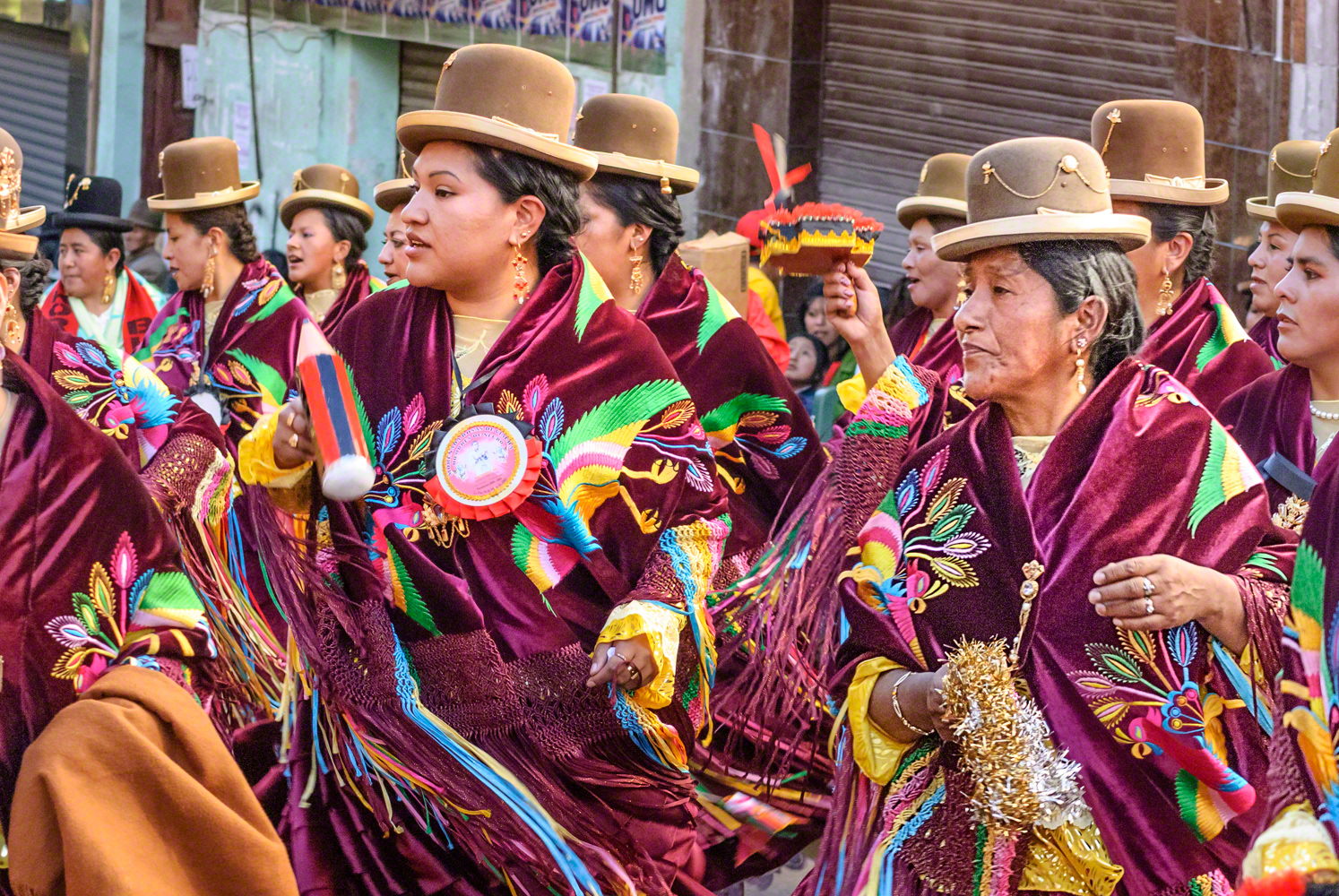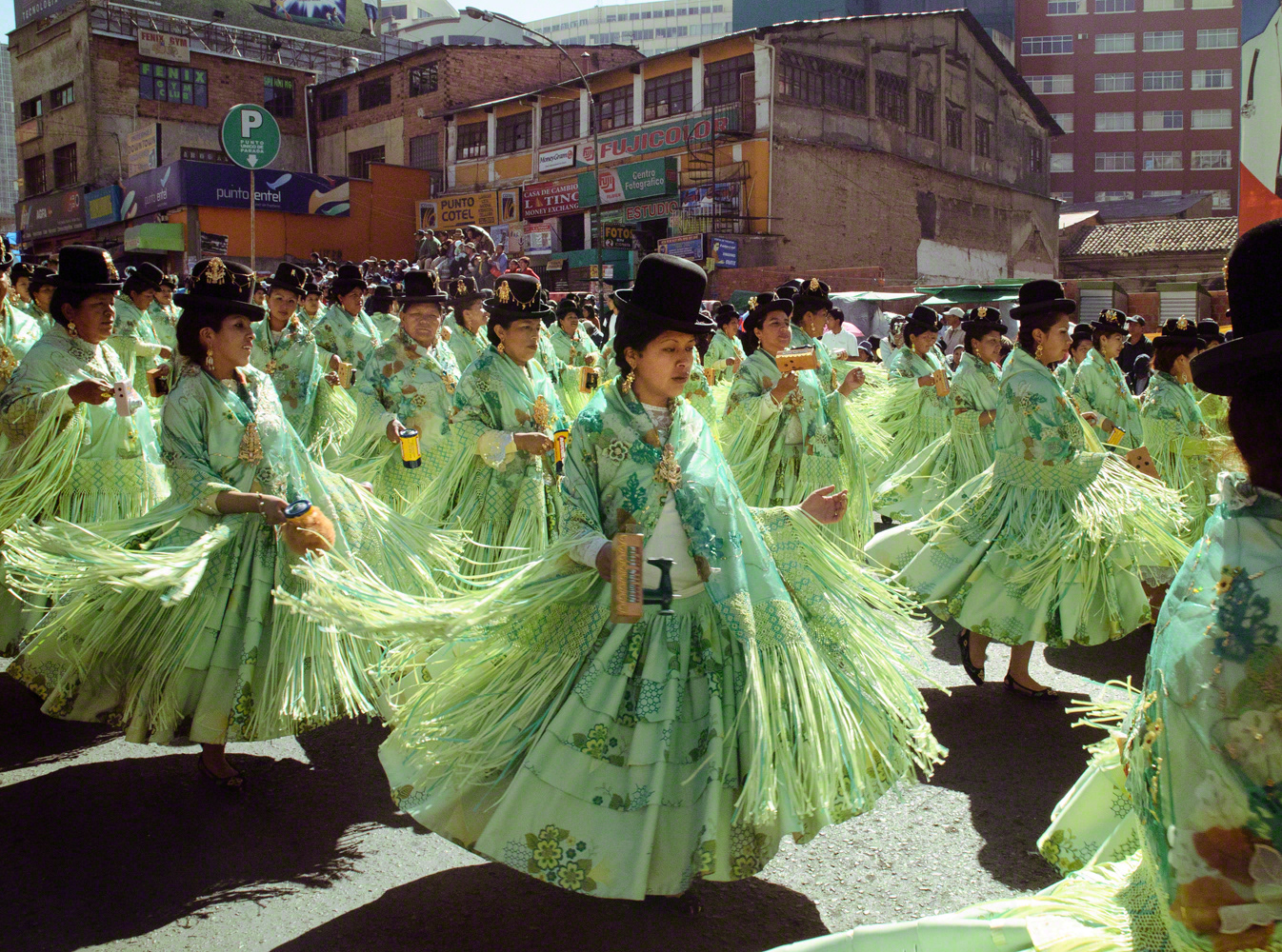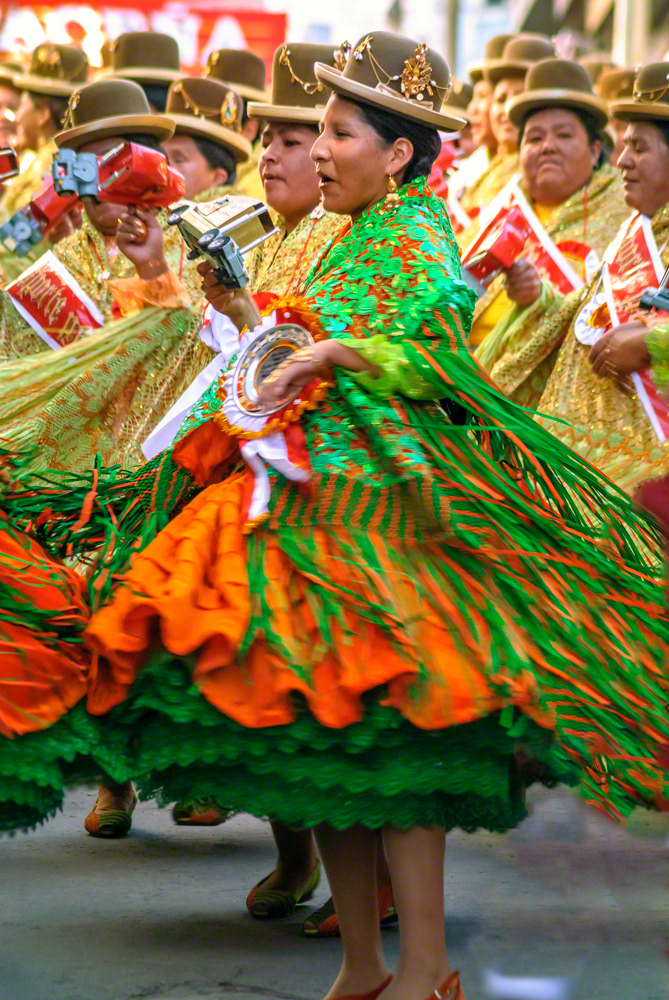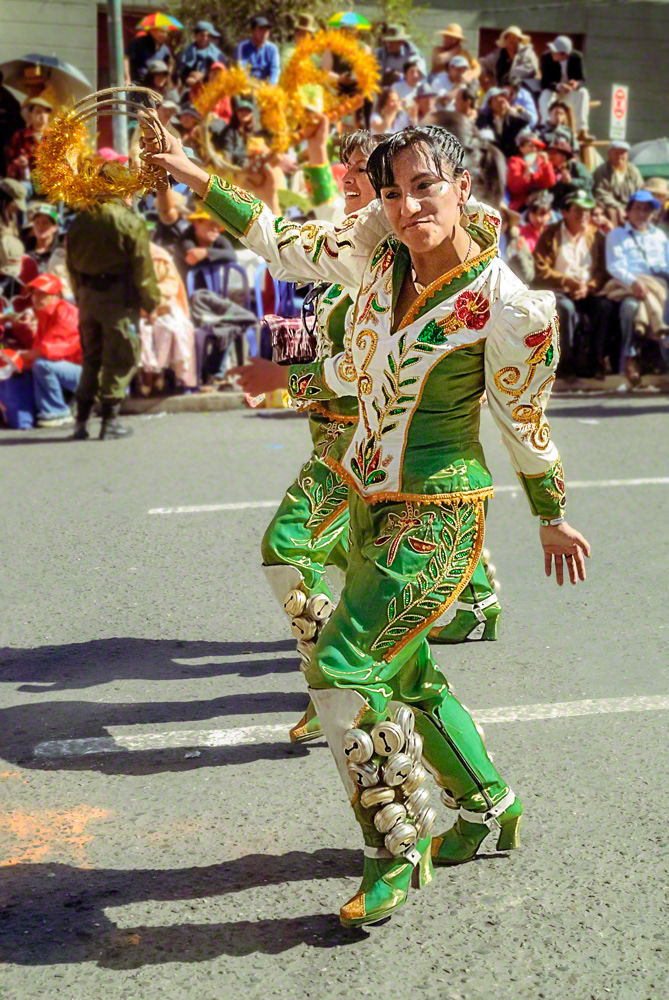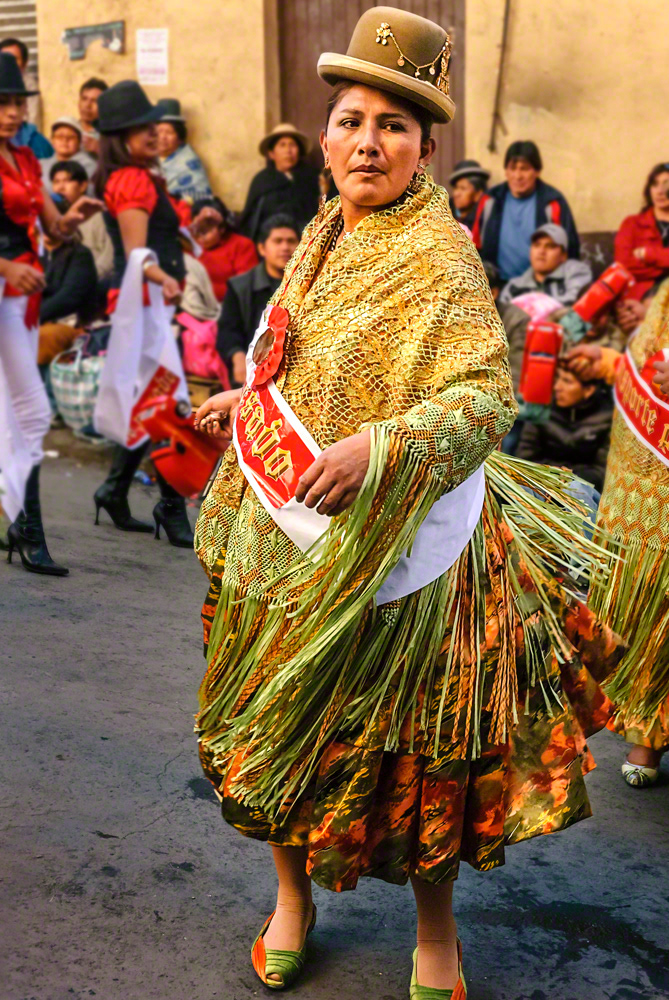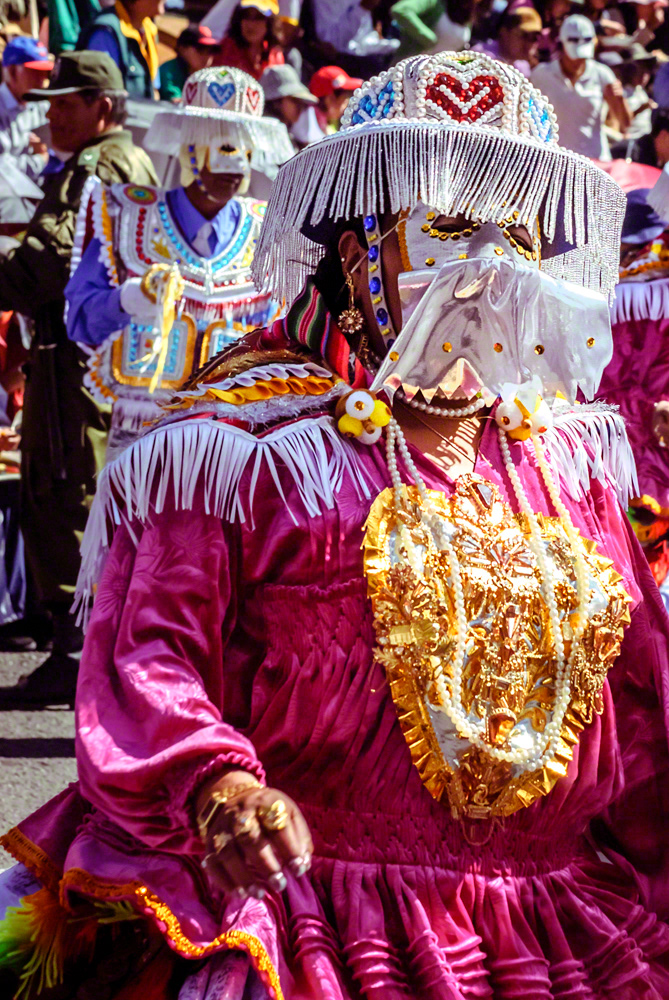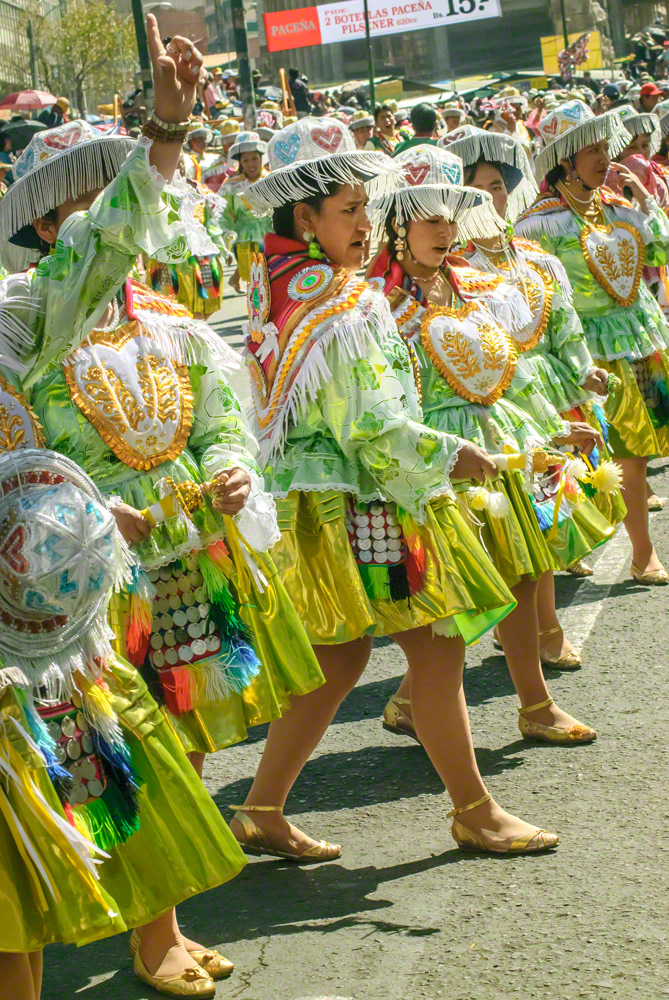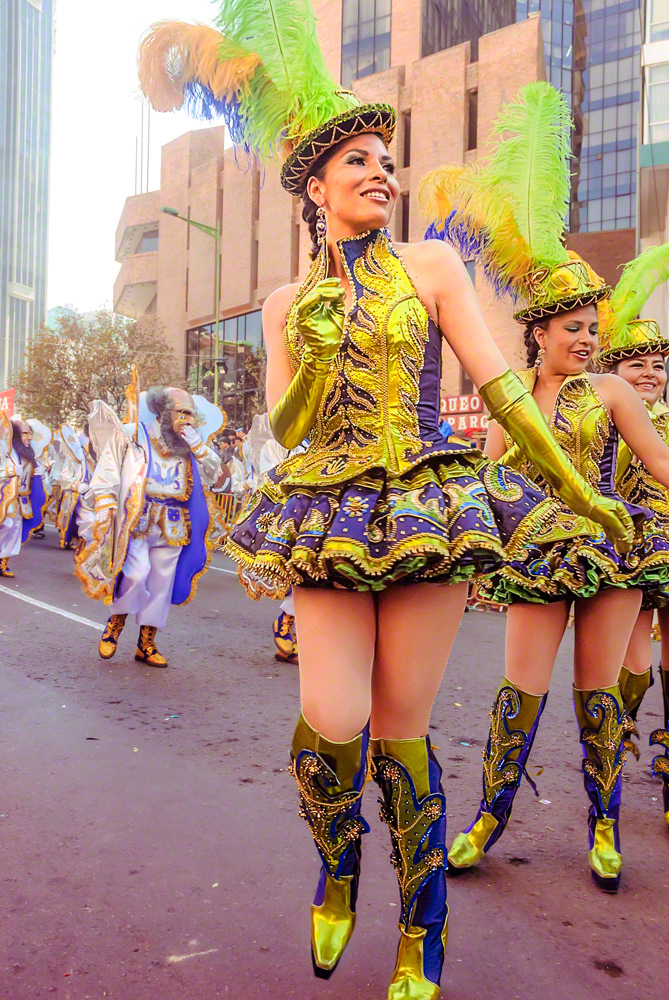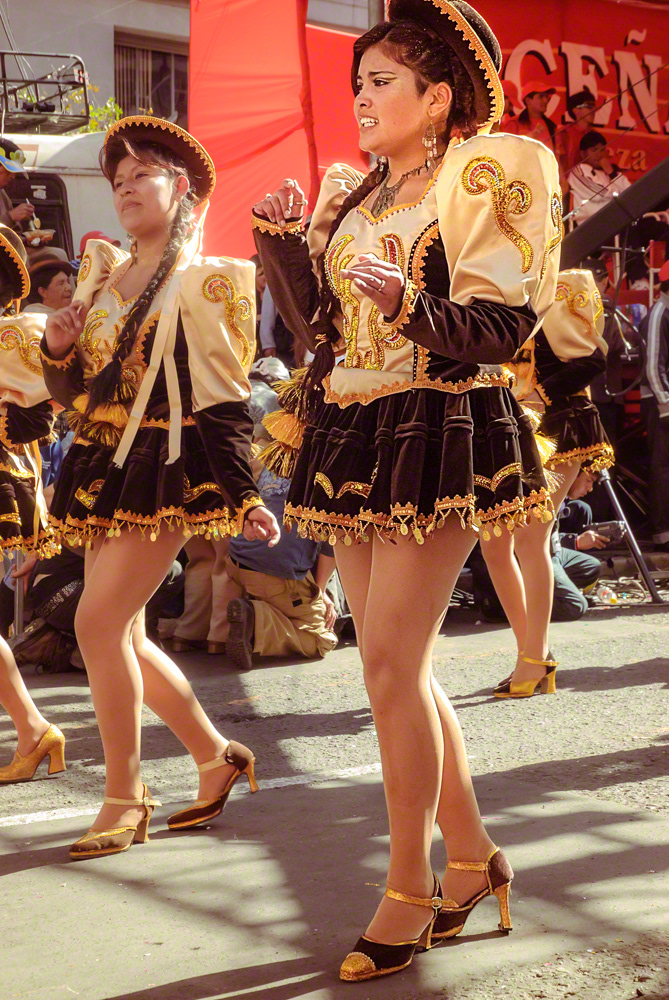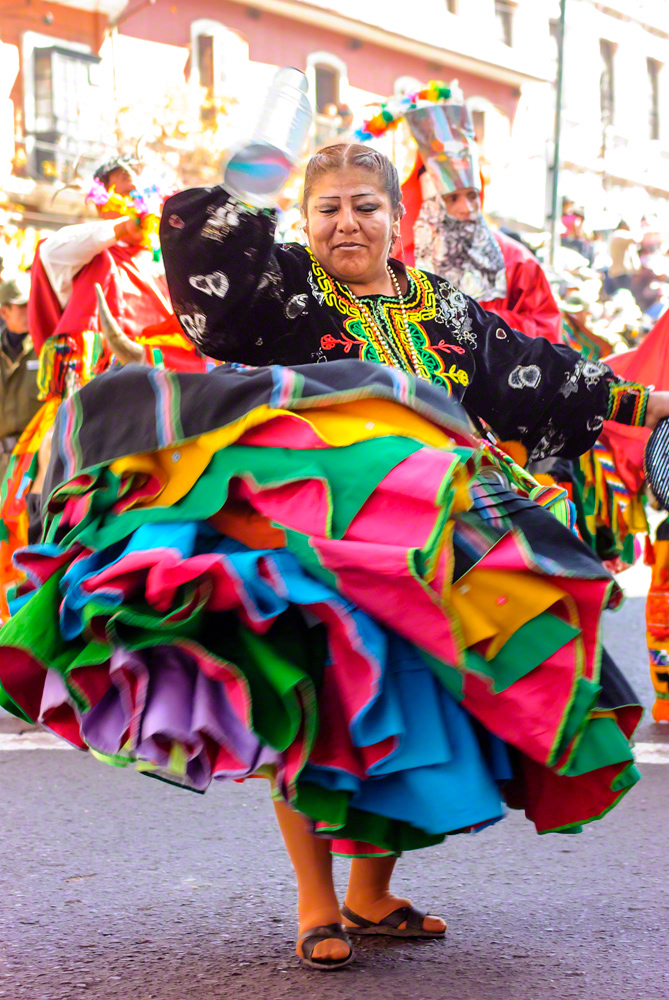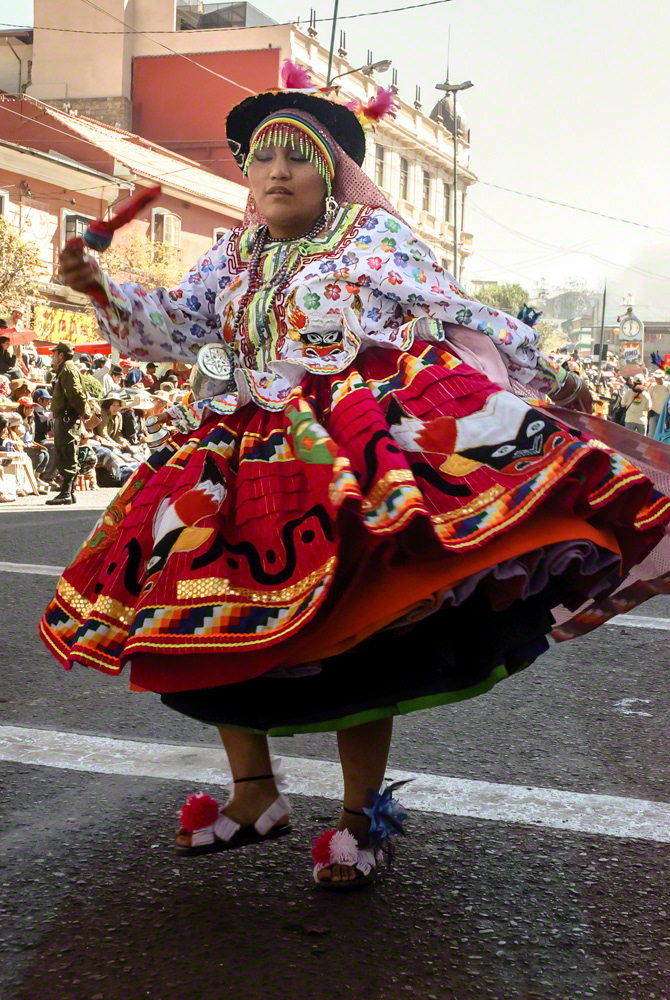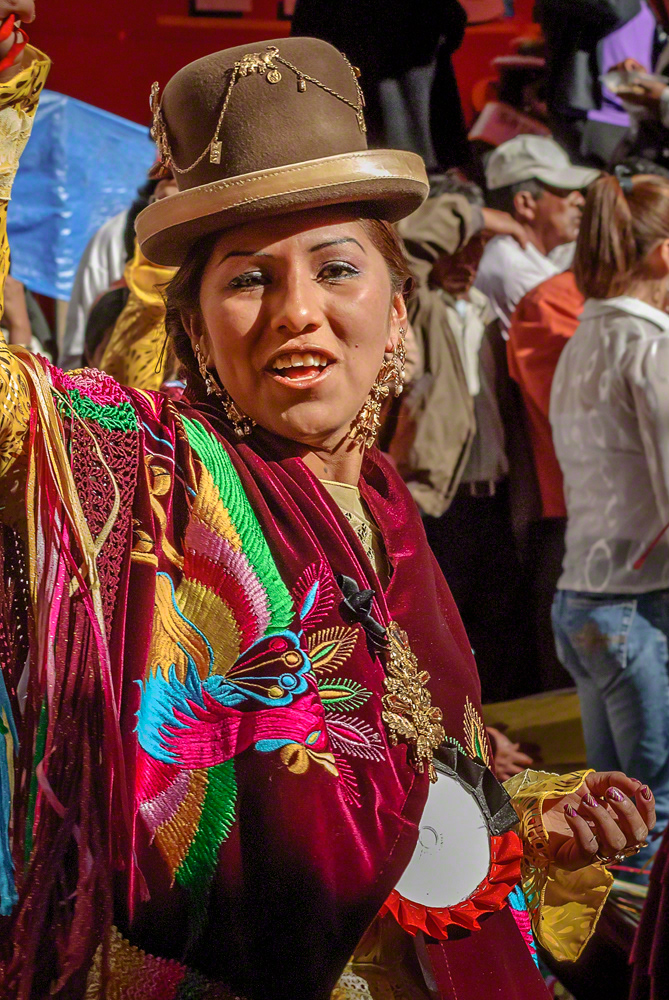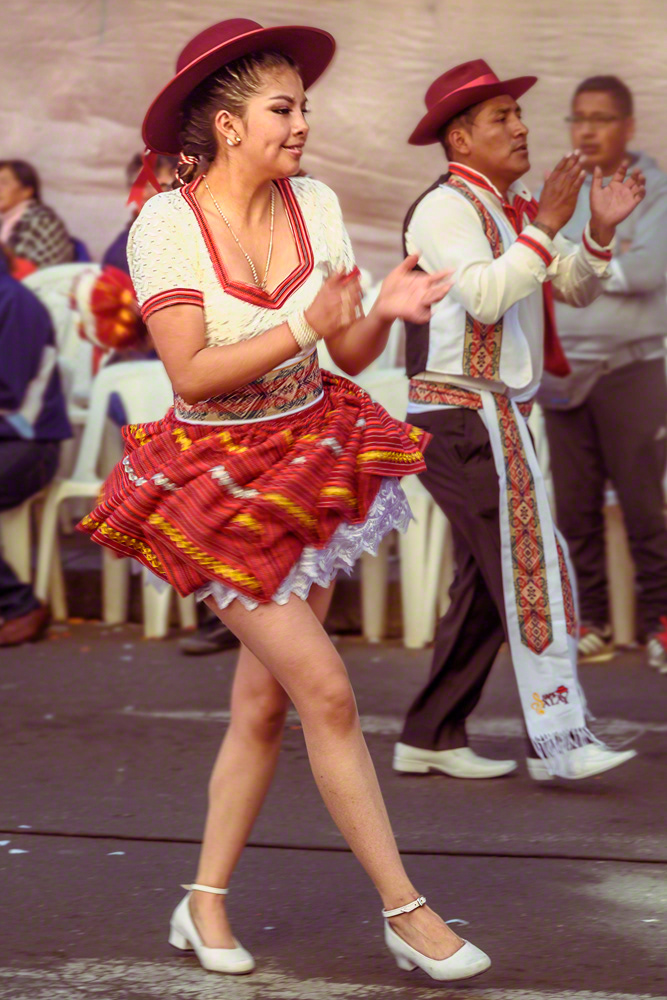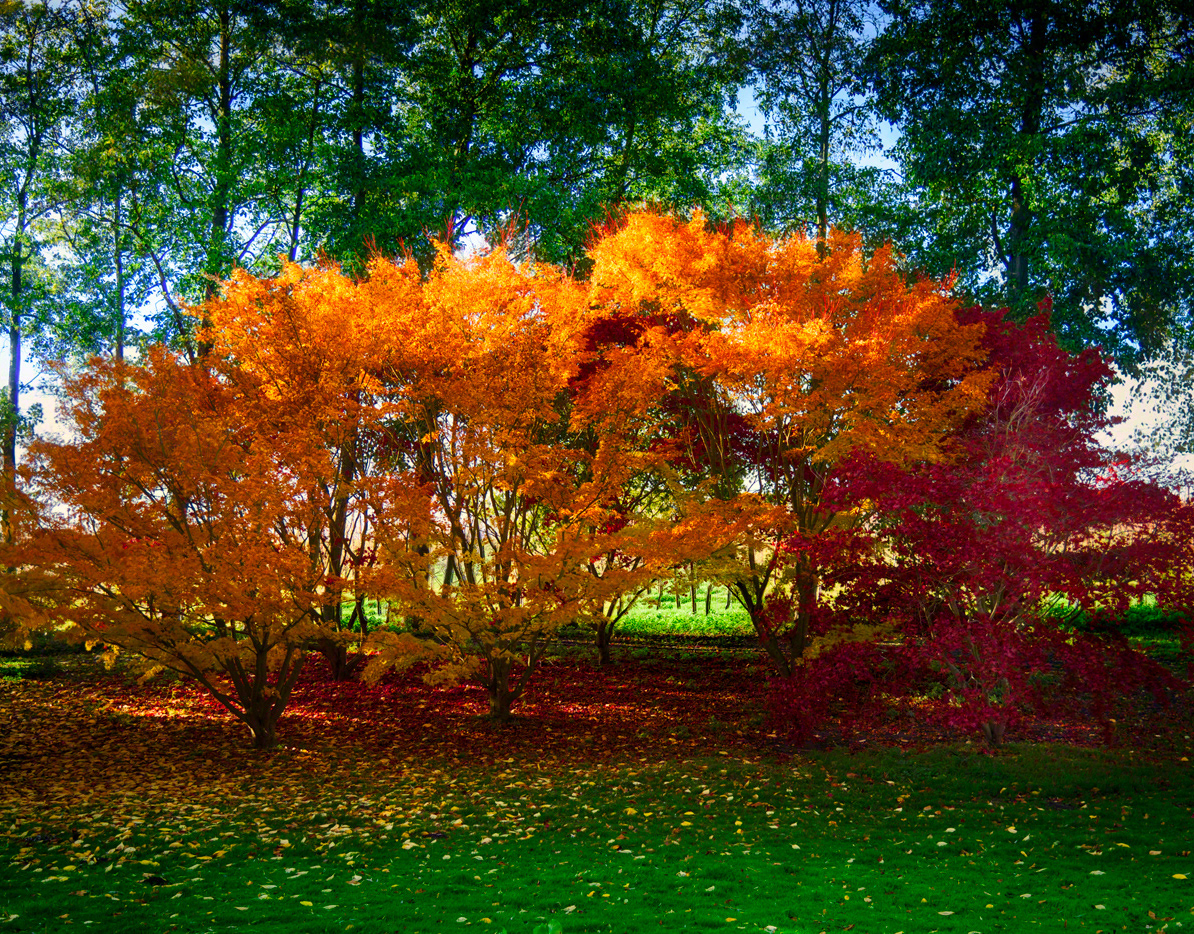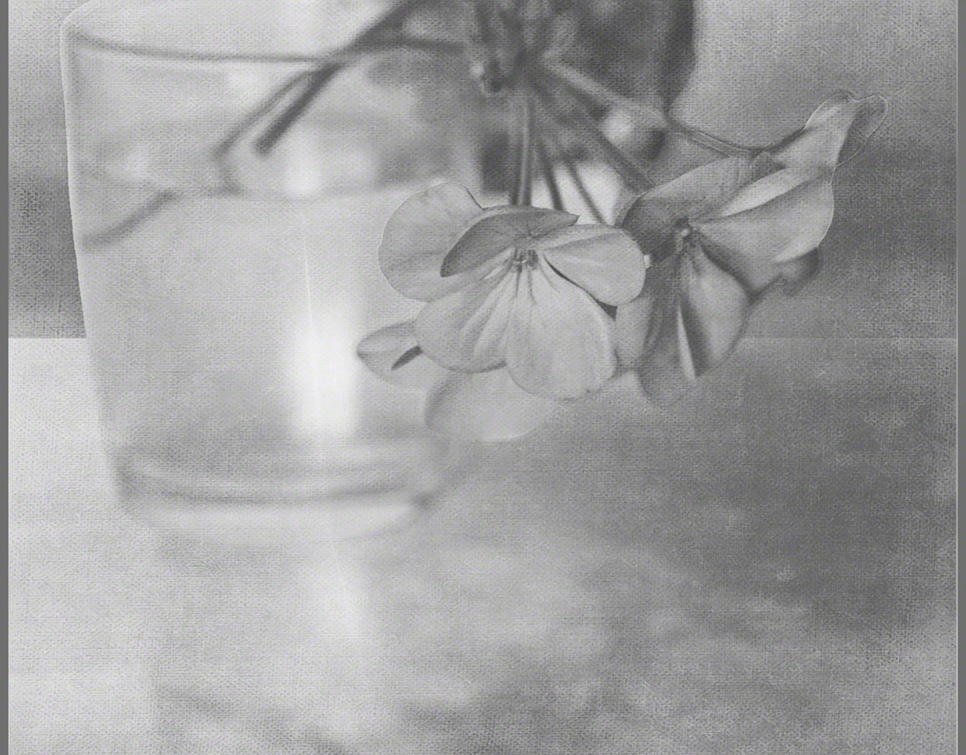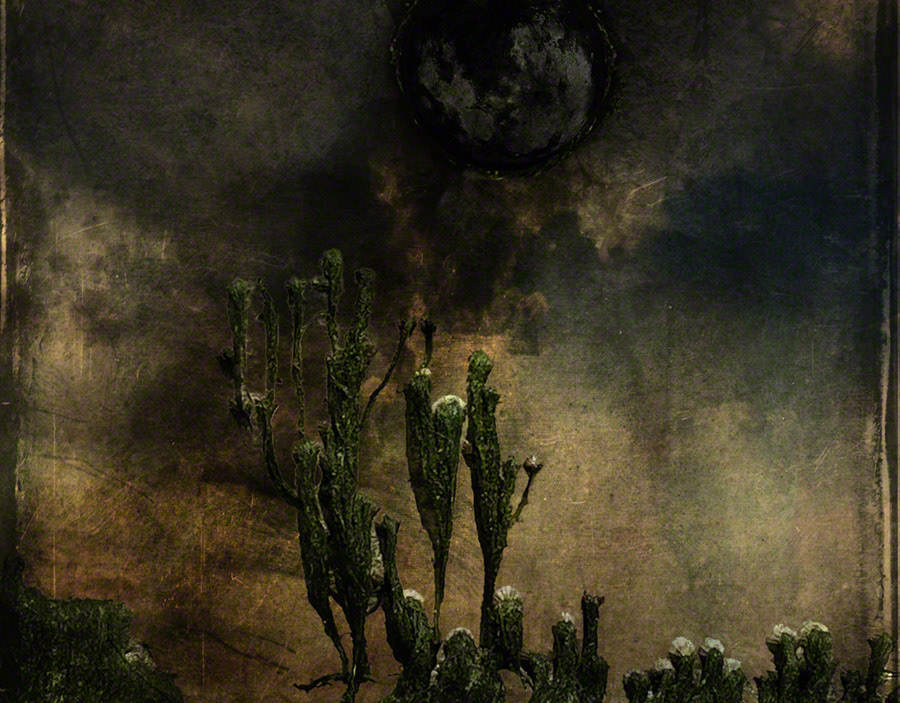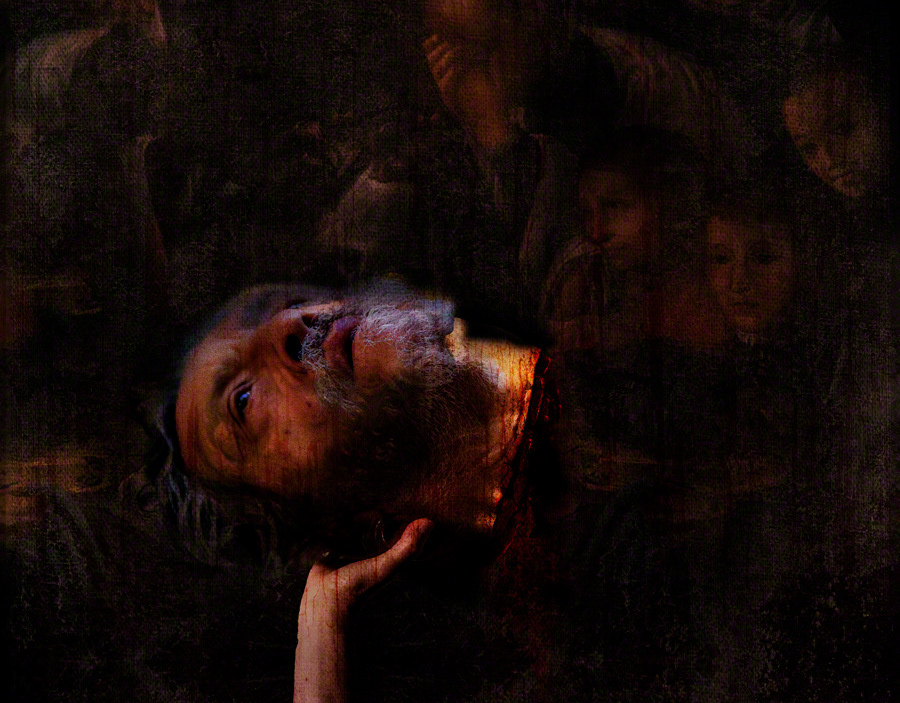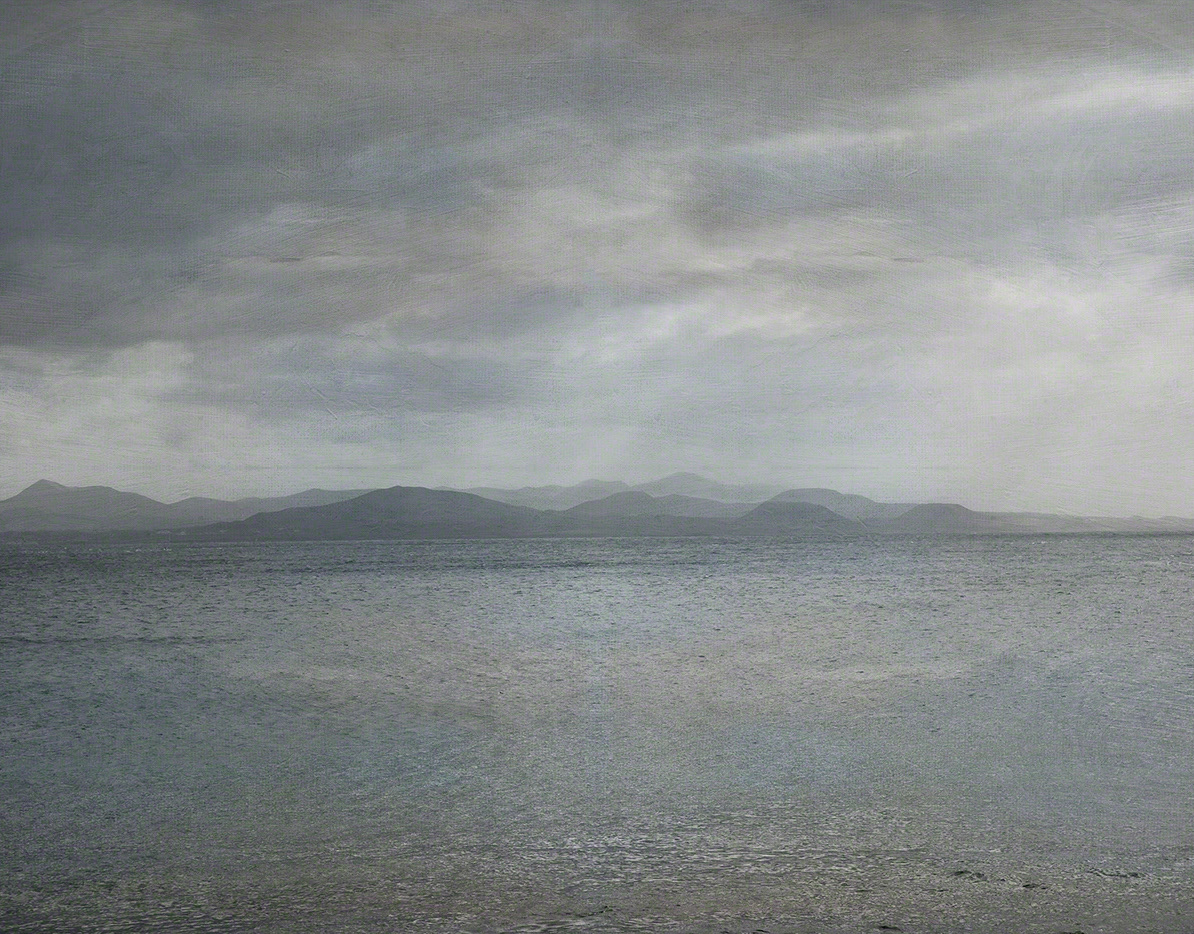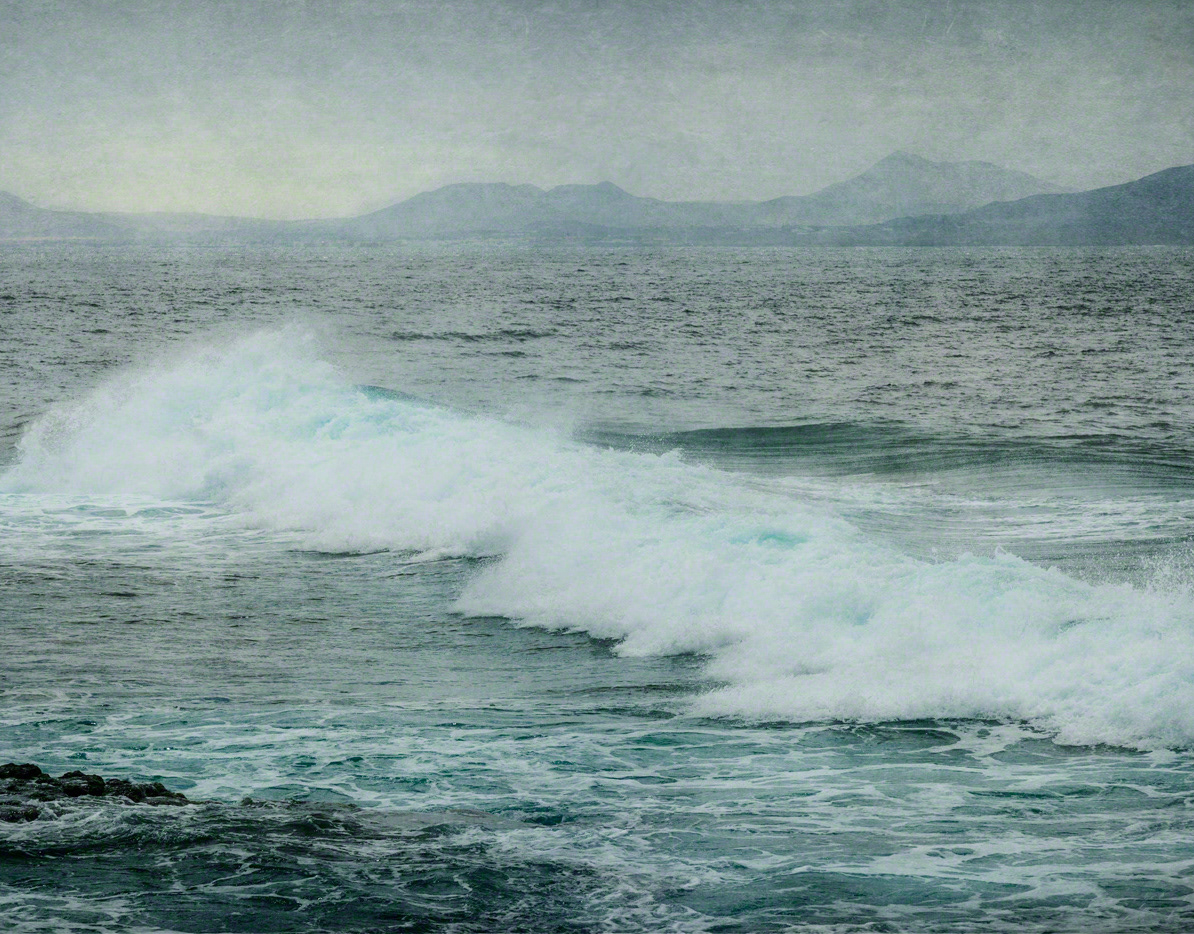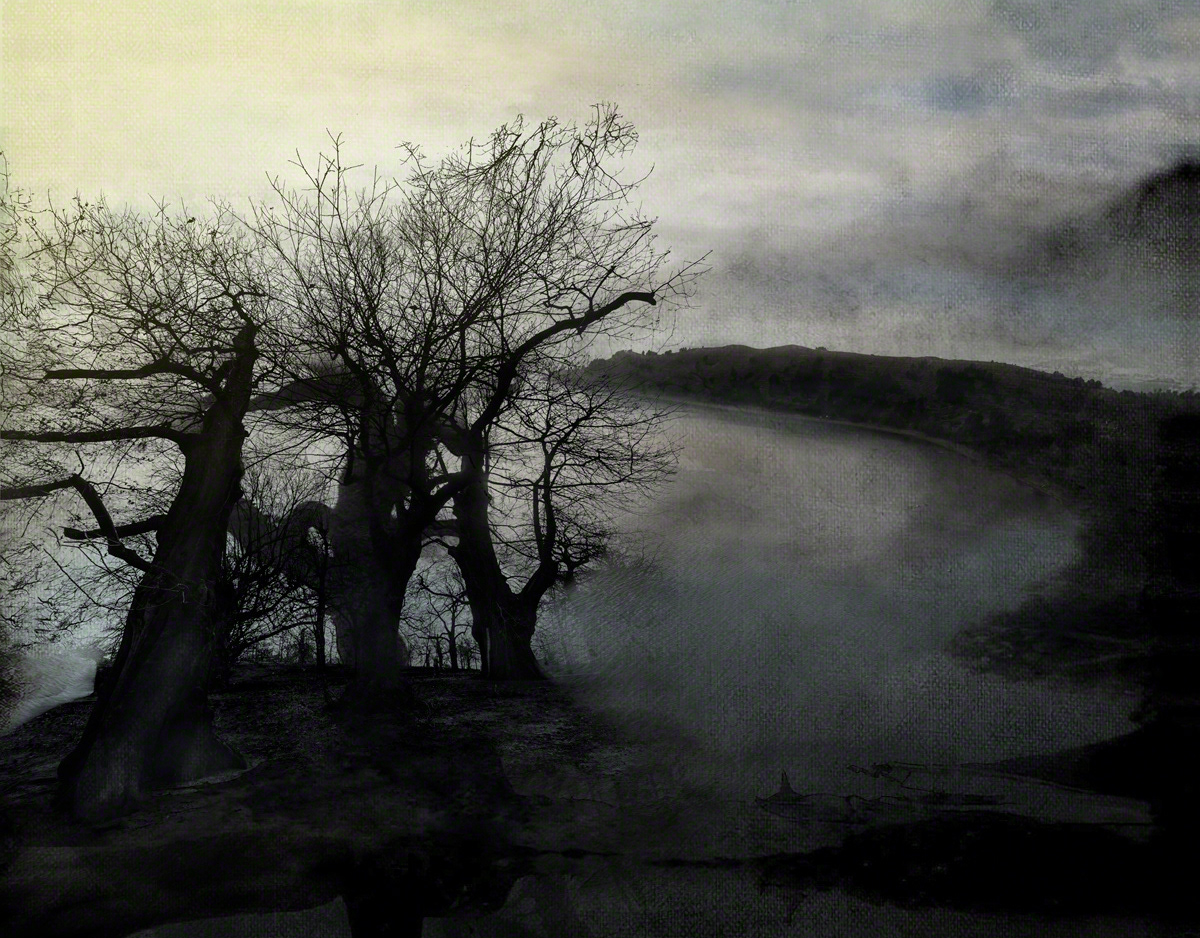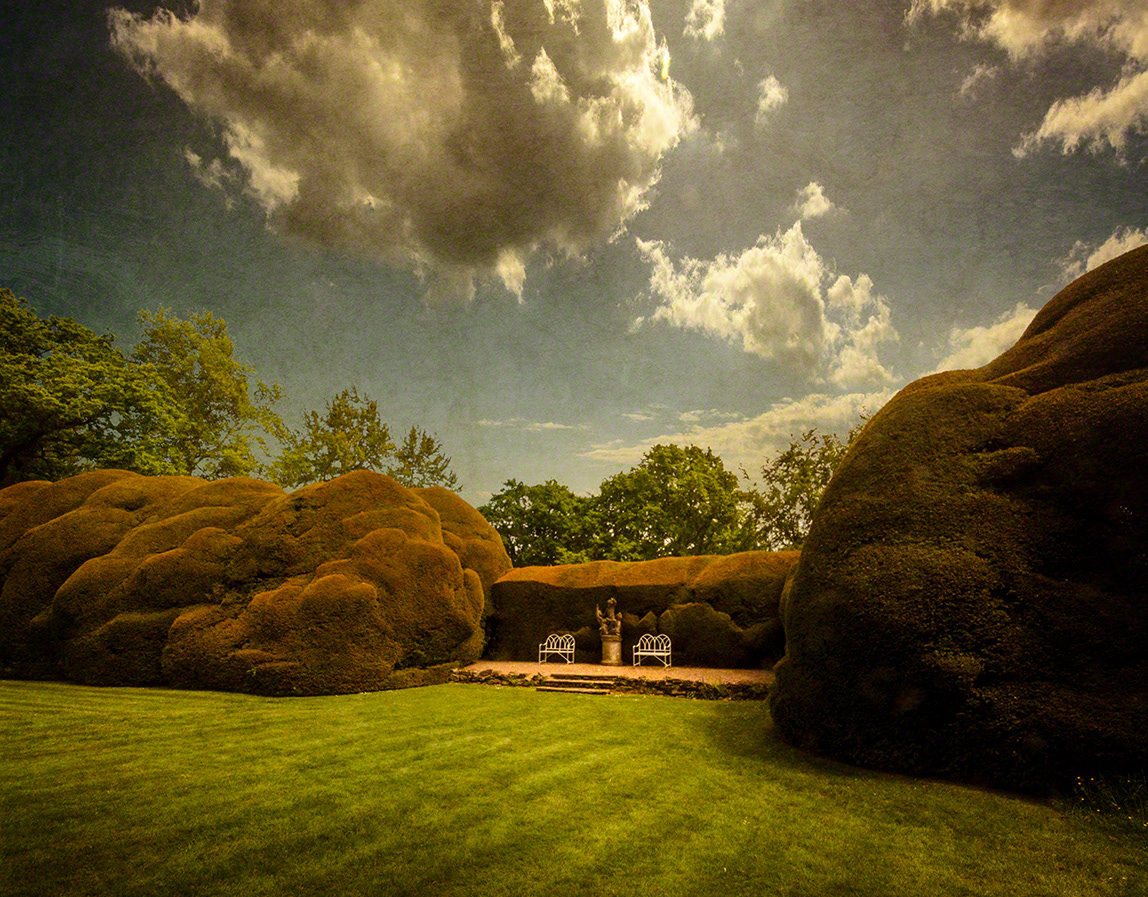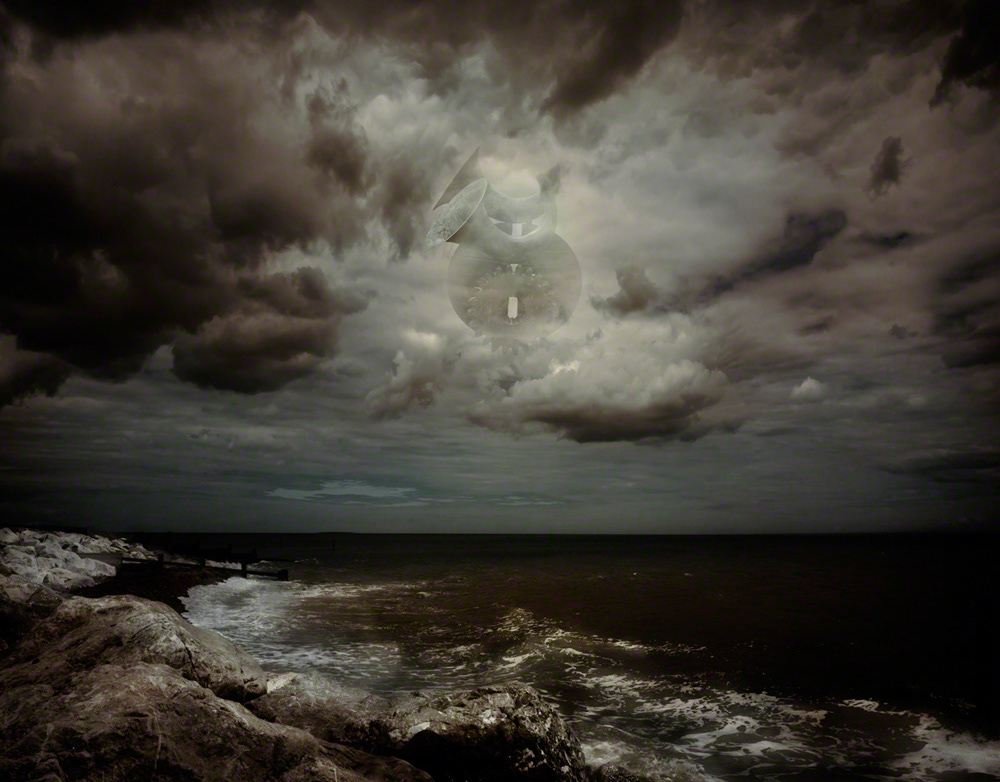(This text is repeated from the other Gran Poder projects in case you have arrived here first)
Inevitably it is necessary to give a historical perspective of this yearly festival that takes place in the city of La Paz, Bolivia. The celebration transforms and stimulates the social life of La Paz every year, emanating from a particular way of understanding and living Andean Catholicism. The Parade begins with a procession through the western part of the city. This procession is central to the event, involving 40,000 devotees who dance and sing in an offering to the patron saint. The dance has a sacred significance for the sixty-nine fraternities involved, which are greeted in the streets in a euphoric atmosphere where the music of 7,000 musicians resonates.
It is so owe inspiring that it is rightfully a UNESCO Wold Heritage event (Intangible Cultural Heritage of Humanity).
The image venerated with dance and music is believed to have arrived in the city at the founding of the convent of the Mothers of the Sacred Conception on the 8th of December 1663, representing the Trinity: a single body with three faces. Because of its heterodox nature Pope Benedict VI prohibited its worship. To continue to venerate it, being considered miraculous by its followers, it was decided to paint over the Trinity, leaving only one face and without the triangular ribbon held by the hands of the Christ.
The first organised manifestation of the festival goes back to 1926 with the first fraternities of dancers, mainly the groups of embroiderers.
Each group starts with a banner indicating a fraternity, followed by the dancers in their varied costumes, and followed by the brass band belonging to each group
It is impossible to translate the atmosphere and sounds with stills. For an improved feel do play the music while viewing these images.
